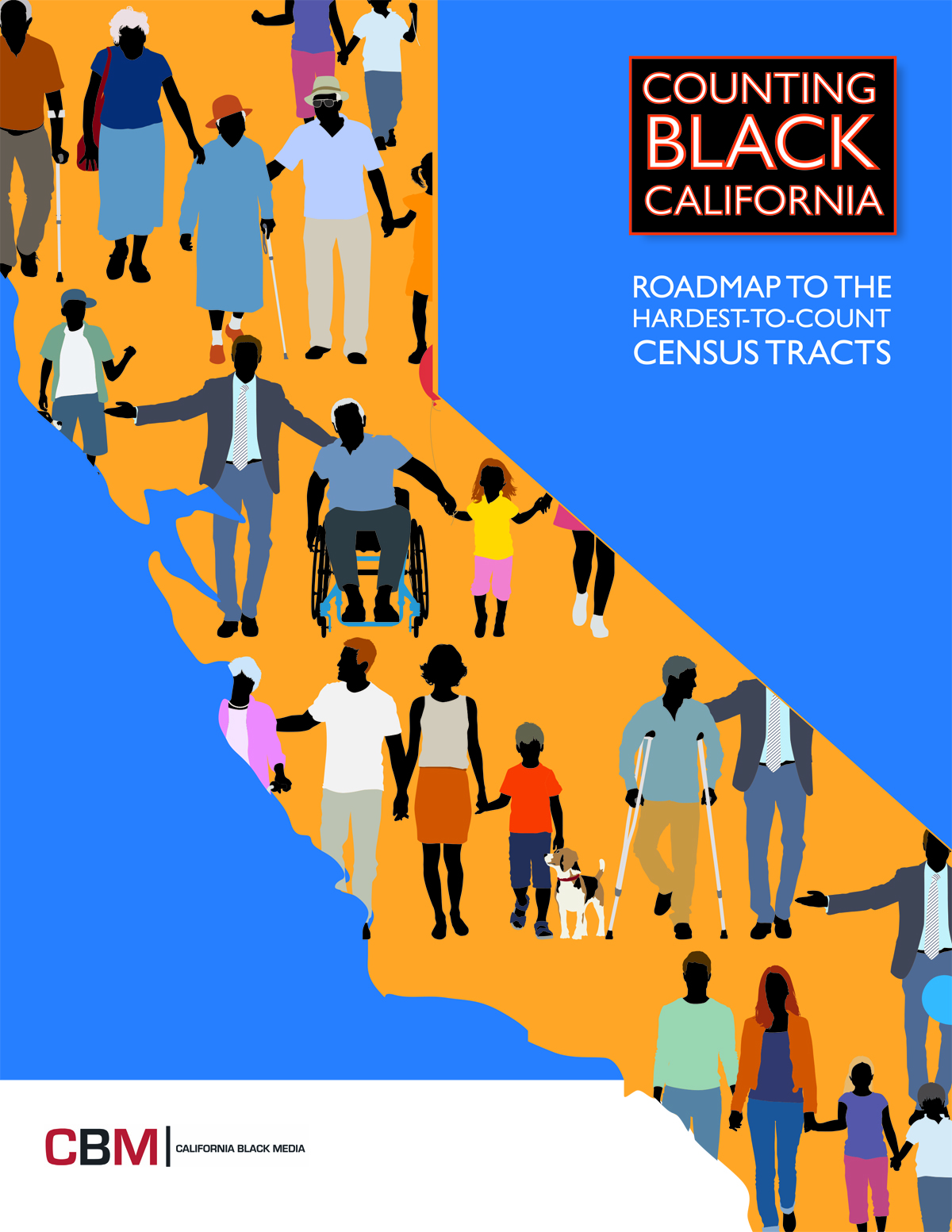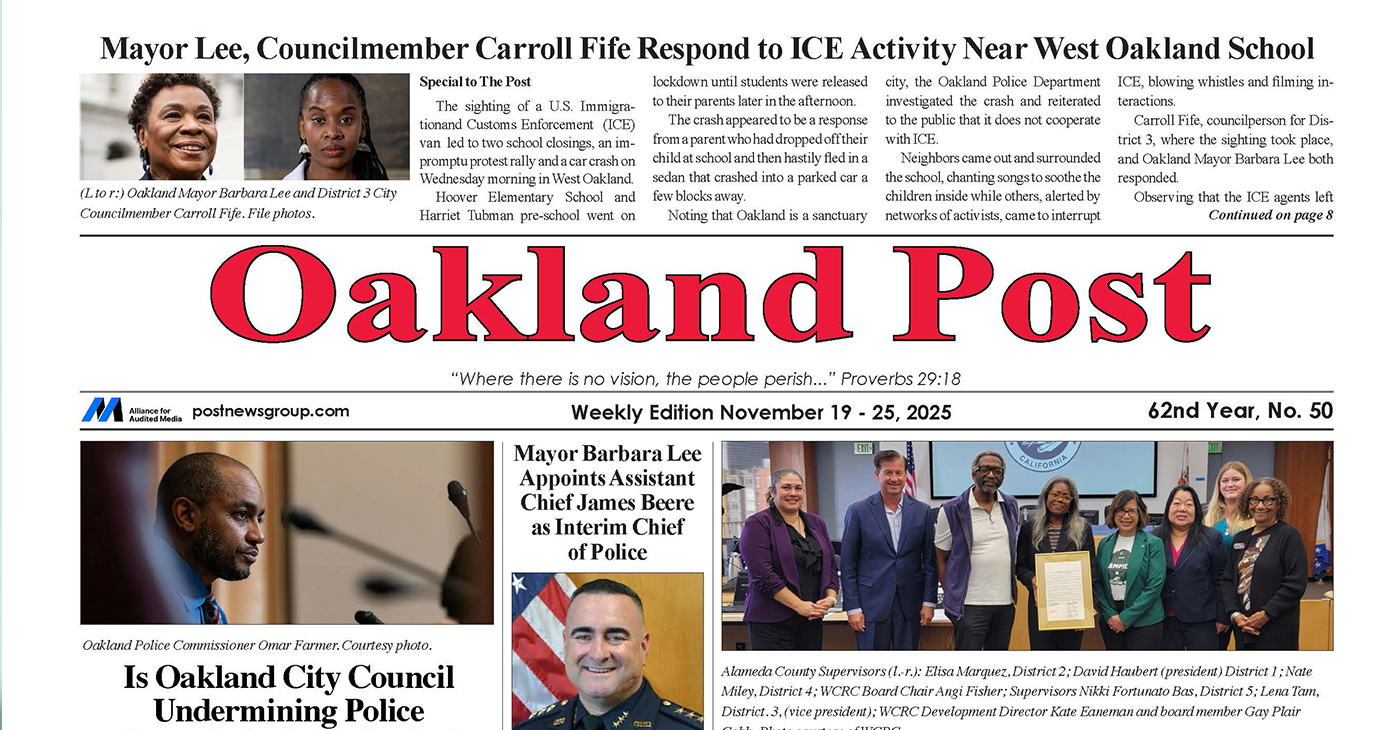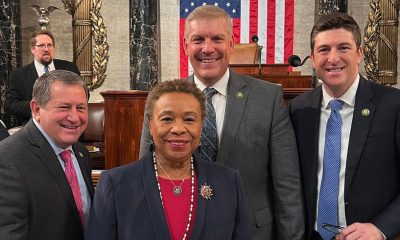Bay Area
A Roadmap for Counting More African Americans in California During the 2020 Census

California Black Media (CBM) has released their updated and comprehensive, “Counting Black California-Counting the Hard to Count” study, identifying areas in the state where African Americans are least likely to be counted by the 2020 Census. The study examined 16 socio-economic variables among Black residents of census tracts throughout the state considered the “least likely to participate” and “less likely to participate”—classifications that are used by the Census.
The study concluded that the most effective way to get a complete count of African Americans in California would be to focus first on 41 distinct areas across the state—some, towns with only hundreds of Black residents; others, cities with Black populations approaching 100,000. These areas capture the vast majority of African Americans in California, and if focused on, would deliver efficient and effective results.
With the 2020 Census effort officially launching yesterday—especially given the significant challenges presented by the Coronavirus—the study is intended to help hit the target areas that will more than likely not respond to the states’ first push to reach residents to respond.
CBM’s executive director Regina Wilson stated, “We risk being undercounted because the Census is overshadowed by today’s crisis, but being undercounted means having fewer resources to battle tomorrow’s crisis as well. I support all of the hard-working Community organizations and ethnic media rising to these challenges to ensure our most vulnerable residents are counted. We hope this report will allow outreach organization’s to better pinpoint where our most vulnerable Black people live.”
The study was commissioned by CBM and authored by Walter Scott Hawkins, who spent 30 years in the California State University System, including serving as Director of Research & Policy Analysis at CSUSB. Hawkins said, “What makes this study unique is that we carefully selected variables that allow us to look solely at Blacks in California. We didn’t compare them to other groups, which so many other studies do. I believe we’ve created a road map for any organization educating the public to target historically vulnerable residents on the importance of self-response to the Census. I also believe the data will drive targeted results for our community during the 2020 Census and Non-Response Follow-up period.”
“The beauty of this report,” Hawkins continued, “is that it can be used by a range of city, county and state leaders to measure education results, deliver social services, track and advocate for affordable housing, etc. Black communities in California can’t afford another undercount,” Hawkins went on to say. “We know that the 2010 Census undercounted African Americans across the nation by more than 800,000, and approximately seven percent of young African American children were overlooked by that census.
Every policymaker and informed community leader understands the significant negative impact that an undercount of that magnitude can have on a community. We launched this study to avoid repeating that mistake; to provide a very detailed roadmap for counting Blacks in California. And importantly, we believe that the methodology can be replicated across the U.S.”
Download the study here: www.cablackmedia.org
Alameda County
Seth Curry Makes Impressive Debut with the Golden State Warriors
Seth looked comfortable in his new uniform, seamlessly fitting into the Warriors’ offensive and defensive system. He finished the night with an impressive 14 points, becoming one of the team’s top scorers for the game. Seth’s points came in a variety of ways – floaters, spot-up three-pointers, mid-range jumpers, and a handful of aggressive drives that kept the Oklahoma City Thunder defense on its heels.

By Y’Anad Burrell
Tuesday night was anything but ordinary for fans in San Francisco as Seth Curry made his highly anticipated debut as a new member of the Golden State Warriors. Seth didn’t disappoint, delivering a performance that not only showcased his scoring ability but also demonstrated his added value to the team.
At 35, the 12-year NBA veteran on Monday signed a contract to play with the Warriors for the rest of the season.
Seth looked comfortable in his new uniform, seamlessly fitting into the Warriors’ offensive and defensive system. He finished the night with an impressive 14 points, becoming one of the team’s top scorers for the game. Seth’s points came in a variety of ways – floaters, spot-up three-pointers, mid-range jumpers, and a handful of aggressive drives that kept the Oklahoma City Thunder defense on its heels.
One of the most memorable moments of the evening came before Seth even scored his first points. As he checked into the game, the Chase Center erupted into applause, with fans rising to their feet to give the newest Warrior a standing ovation.
The crowd’s reaction was a testament not only to Seth’s reputation as a sharpshooter but also to the excitement he brings to the Warriors. It was clear that fans quickly embraced Seth as one of their own, eager to see what he could bring to the team’s championship aspirations.
Warriors’ superstar Steph Curry – Seth’s brother – did not play due to an injury. One could only imagine what it would be like if the Curry brothers were on the court together. Magic in the making.
Seth’s debut proved to be a turning point for the Warriors. Not only did he contribute on the scoreboard, but he also brought a sense of confidence and composure to the floor.
While their loss last night, OKC 124 – GSW 112, Seth’s impact was a game-changer and there’s more yet to come. Beyond statistics, it was clear that Seth’s presence elevated the team’s performance, giving the Warriors a new force as they look to make a deep playoff run.
Activism
Oakland Post: Week of November 26 – December 2, 2025
The printed Weekly Edition of the Oakland Post: Week of November 26 – December 2, 2025

To enlarge your view of this issue, use the slider, magnifying glass icon or full page icon in the lower right corner of the browser window.
Activism
Oakland Post: Week of November 19 – 25, 2025
The printed Weekly Edition of the Oakland Post: Week of November 19 – 25, 2025

To enlarge your view of this issue, use the slider, magnifying glass icon or full page icon in the lower right corner of the browser window.
-

 Activism4 weeks ago
Activism4 weeks agoOakland Post: Week of November 12 – 18, 2025
-

 Activism3 weeks ago
Activism3 weeks agoIN MEMORIAM: William ‘Bill’ Patterson, 94
-

 Activism4 weeks ago
Activism4 weeks agoHow Charles R. Drew University Navigated More Than $20 Million in Fed Cuts – Still Prioritizing Students and Community Health
-

 Bay Area4 weeks ago
Bay Area4 weeks agoNo Justice in the Justice System
-

 #NNPA BlackPress3 weeks ago
#NNPA BlackPress3 weeks agoLewis Hamilton set to start LAST in Saturday Night’s Las Vegas Grand Prix
-

 #NNPA BlackPress3 weeks ago
#NNPA BlackPress3 weeks agoBeyoncé and Jay-Z make rare public appearance with Lewis Hamilton at Las Vegas Grand Prix
-

 Activism2 weeks ago
Activism2 weeks agoOakland Post: Week of November 19 – 25, 2025
-

 #NNPA BlackPress4 weeks ago
#NNPA BlackPress4 weeks agoThe Perfumed Hand of Hypocrisy: Trump Hosted Former Terror Suspect While America Condemns a Muslim Mayor

























































